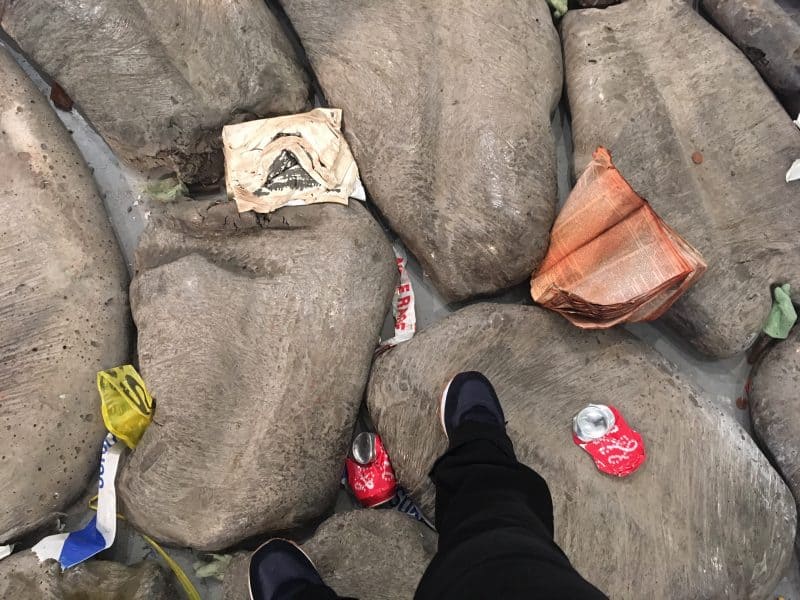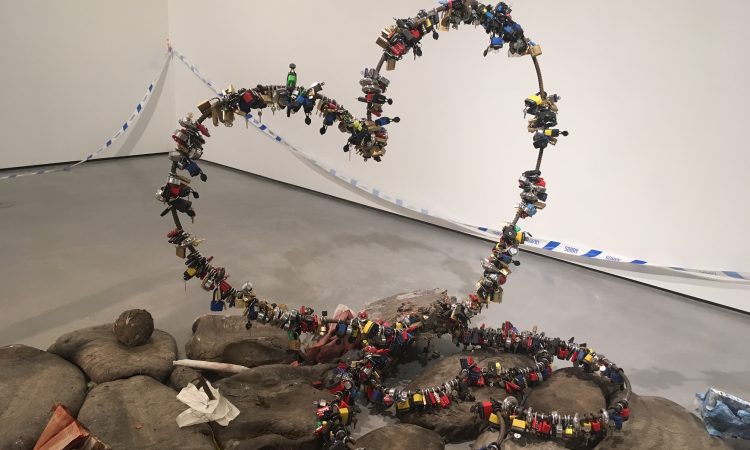The democracy of modern sculpture. ANNA CALE visits the Hepworth Prize for Sculpture and loses her inhibitions.
On a trip to The Hepworth Gallery in Wakefield recently, I felt a little guilty. It’s my eight-year-old daughter’s favourite gallery you see, and I had the audacity to go there alone this time. I love the building and the use of space and light, the variety of exhibitions, and I’m a big fan of Hepworth’s work. I also find joy in seeing how much Daisy loves it. She feels comfortable in the relaxed atmosphere and even has a favourite sculpture. She embraces the space as her own, often sitting on the floor drawing. She isn’t intimidated by the art at all.
That’s how it should be, but sometimes I feel a bit hesitant around contemporary art. I feel a bit exposed by it, like I’m being tested and if I don’t get it, I will have failed. I always try to view and understand the work with an open mind, and I love visiting galleries and seeing art in different settings. But I can be left feeling a bit daunted or discombobulated by some modern pieces and installations. Not all of them, just some of them, but it’s enough to make me hesitant about forming an opinion confidently.
The gallery is currently running the annual Hepworth Prize for Sculpture, which recognises a British or UK-based artist who has made a significant contribution to the development of contemporary sculpture. I was keen to see the shortlisted work, particularly the winning sculpture by Cerith Wyn Evans, but I found myself wishing I had Daisy with me to break through my nervousness with her purely instinctive reactions. I tried to think a little bit more like her to break the tension in my mind.
I was impressed by the variety of the work as I walked through the galleries. In the final room I came across the work by Michael Dean. I looked at it, I thought I liked it, but I didn’t really get it at first. While I was pondering, one of the attendants came up to the artwork and stood on it. She walked along it towards me and pointed something out, “That’s my favourite bit,” she said, smiling. You could tell she really took pleasure in it. She invited me to stand on the work too. That was the idea, she assured me, for the viewer to be a part of it. So I climbed on with her.

I initially felt a bit out of my comfort zone, but from my new viewpoint I saw the work differently. The attendant and I kept spotting new things and pointing them out to each other. I saw bits that she didn’t and vice versa. She explained what the artist was trying to get across. We had a fantastic conversation about the work, and about being in the moment with art like that. Her enthusiasm was palpable and infectious.
She referred to the ‘democracy’ of modern sculpture and I absolutely understood what she meant. When it became a conversation about the work I felt more engaged and comfortable with it, and had more confidence in my ability to understand the artist’s vision. Interacting with the work was liberating and allowed me to relax, enjoy it and own the experience. Engaging with the sculpture in this way fitted with the artist’s aim of having a direct conversation with us. My inhibitions melted away and I felt that direct link with the artist and the sculpture.
That’s one of the lovely things about the Hepworth and the way it allows work to be viewed the way the artist intended. And if that means touching and exploring it then all the better. I’ve engaged with interactive or immersive art a few times this year, but this was the first time I’ve actually stood on a sculpture. I think my daughter would approve.
The Hepworth Prize for Sculpture runs until 20 January 2019. More information on the Gallery Website
